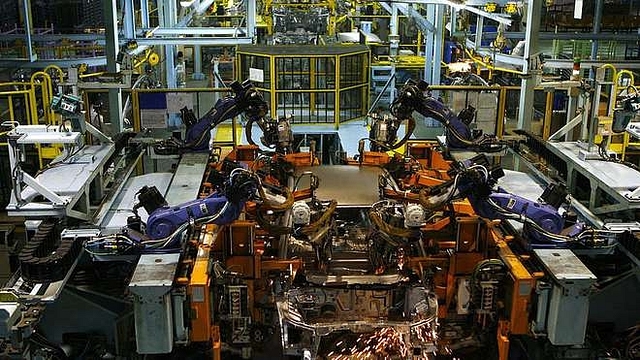
Is Indian Economy Turning The Corner?
Favourable macroeconomic data, second quarter results, and the bank recapitalisation plan are helping dispel the sense of gloom that set in after India’s GDP growth slumped to 5.7 per cent in the June quarter.
A raft of recent data, including some second-quarter corporate results, is giving confidence to economists that a recovery in growth is imminent, even as the government’s push for bold bank reforms is boosting investor sentiment.
That’s helping dispel the sense of gloom that set in after economic growth decelerated to 5.7 per cent in the quarter to June – the slowest pace in three years.
On Thursday, the BSE’s benchmark Sensex extended the lifetime high it hit the previous day, gaining 0.32 per cent to 33,147.13 points.
Hindustan Unilever Ltd (HUL), India’s biggest maker of packaged consumer goods and a corporate proxy for consumption demand in the economy, beat analysts’ expectations on Wednesday, reporting a stellar 16.42 per cent increase in net profit for the September quarter to Rs 1,276 crore from a year earlier. The company had posted a 9.3 per cent profit increase in the June quarter, the period when businesses slowed production in the run-up to the historic rollout of the goods and services tax (GST) from 1 July.
HDFC Bank Ltd, Kotak Mahindra Bank Ltd and Axis Bank Ltd, cement maker ACC Ltd, metals producer Hindustan Zinc Ltd and software exporters such as Infosys Ltd have also reported robust second-quarter growth, reinforcing confidence that the growth momentum is accelerating.
Data ranging from cooling of inflation to a rebound in exports and factory output that came in the middle of October suggested a favourable shift in the economy, recovering from the disruption caused by the GST rollout and last November’s demonetization of high-value banknotes.
The National Democratic Alliance government, which on Tuesday announced Rs 6.92 trillion investment for the construction of roads and a Rs 2.11 trillion recapitalisation package for state-run banks weighed down by bad loans, has been under pressure to lift economic growth and create more jobs ahead of crucial state elections, including Prime Minister Narendra Modi’s home state of Gujarat, and national polls in 2019.
Rajiv Kumar, vice-chairman of the federal policy think tank NITI Aayog, said the measures announced on Tuesday indicated the best possible approach.
“It gives impetus to economic growth while maintaining fiscal stability. This comes as a pleasant surprise to the private sector and will stimulate private investments in the economy. Government is acting courageously to revive the animal spirits in the economy,” Kumar said in an interview.
The bank recapitalisation plan will help address the bad loan problem at banks which is constraining the economy, credit rating company Standard & Poor’s said on Wednesday.
Experts are deriving confidence from a rebound in industrial production to a growth pace of 4.3 per cent in August, the fastest in nine months, as the disruptions caused by GST waned.
August data also suggested a recovery in capital goods production, taken as a proxy for investment demand in the economy, from a sustained contraction since the beginning of the financial year. It expanded 5.4 per cent in August. Consumer durables production recovered to grow 1.6 per cent in August after contracting 3.6 per cent in July as manufacturing regains momentum in the new GST regime.
“Fortunately, there are signs that revival of the growth momentum may be just around the corner. The reason for this optimism lies in the trends in exports and imports in September 2017,” said D K Srivastava, chief policy advisor at EY, in a note on Tuesday.
The pace of economic recovery still needs to be monitored closely, experts say.
N R Bhanumurthy, professor at the National Institute of Public Finance and Policy, said two key indicators need to be watched to assess the direction of the economy – data on non-food credit to the commercial sector that the Reserve Bank of India publishes every fortnight and data on non-oil imports, which serve as an indicator of the sustainability of demand in the economy.
“We need to keep a watch on a host of economic data including auto sales, railway freight and exports to see if the momentum is sustained,” said D K Joshi, chief economist at credit rating company Crisil Ltd.
(Mint)